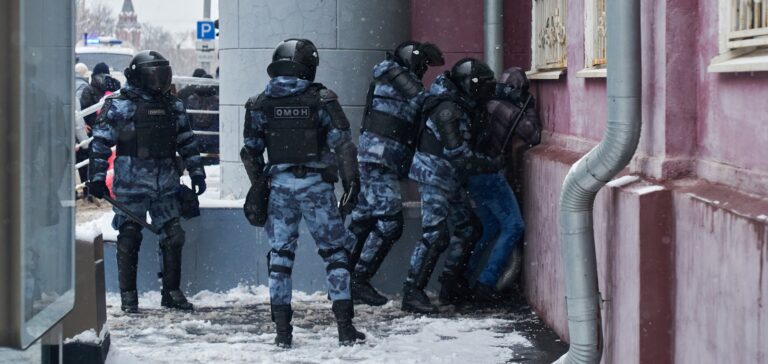Key Takeaways:
- The world is entering the most dangerous nuclear era since the Atomic Age began.
- Nuclear arms control treaties are collapsing, leading to unchecked weapons growth.
- Overlapping threats from multiple countries complicate global security.
- New technologies and political tensions make nuclear war more likely.
- The U.S. needs a new strategy to handle these growing risks.
The End of an Era: Why the Nuclear Threat is Back
For decades, nuclear weapons were a quiet but constant presence in global politics. When the Cold War ended, the world thought the nuclear threat had faded. But this was an illusion. Today, we’re facing a nuclear landscape more dangerous than ever.
A major alarm bell is ringing: the New START treaty, which limits U.S. and Russian nuclear arsenals, will expire in 2026. For the first time in decades, there will be no rules to control nuclear weapons. No inspections, no limits—just a free-for-all arms race. If you think Russia or the U.S. won’t take advantage of this, think again. Without rules, the gloves are off.
Why This Time is Different
The Cold War had a grim stability. Two superpowers with clear rules. But today, the world is more complex. Multiple countries are building nuclear weapons, and the old rules don’t apply. This isn’t a new Cold War—it’s something worse.
China’s Growing Arsenal
China is expanding its nuclear weapons rapidly. They’re building new missiles, submarines, and bombers. They’re even creating hypersonic weapons that can dodge missile defenses. But what’s more concerning is China’s secrecy. Unlike the U.S. and Russia, China doesn’t share much about its nuclear plans. This lack of transparency makes their growing arsenal more dangerous.
India and Pakistan: A Volatile Rivalry
In South Asia, India is modernizing its nuclear forces, focusing on surviving a first strike. Pakistan, facing political instability, remains in a high-stakes standoff with India. Both countries have a history of conflict, and any misstep could lead to disaster.
North Korea’s Nuclear Ambitions
North Korea is getting more dangerous. They’ve tested long-range missiles that can reach the U.S. and submarine-launched missiles. They’ve even threatened to use nuclear weapons first. Their ruler, Kim Jong Un, seems willing to push the limits, making the region increasingly unstable.
Iran’s Nuclear Program
In the Middle East, Iran is getting closer to building nuclear weapons. They’re enriching uranium to near weapons grade, alarming neighbors. If Iran gets the bomb, other countries like Saudi Arabia and Turkey might follow, leading to a nuclear arms race in a volatile region.
The Old Rules Don’t Work Anymore
The world has changed, but our strategies haven’t. The Cold War approach of deterrence—where threats were clear and leaders were rational—doesn’t work in today’s complex world. Today, countries have different ideas about when to use nuclear weapons, and there’s no clear communication. What scares one leader might not bother another.
New Technologies, New Risks
Technology has made the world more dangerous. Cyberattacks, fake videos, and AI can create confusion. Imagine a leader making a decision based on false information—this could lead to accidental war. With less time to react, the risk of a mistake grows.
Washington’s Dangerous Distraction
Despite these threats, many in Washington are focused on politics rather than the nuclear danger. The experts are talking about complex theories like “integrated deterrence,” but these ideas don’t address the real risks. Theystill think deterrence is a solved problem. This is a deadly illusion.
The Last Chance for Action
The U.S. has done little to address these dangers. The Biden administration extended the New START treaty in 2021 but hasn’t made progress on a new agreement. The Trump administration scrapped old treaties without replacements. Now, with Trump back in office, it’s unlikely things will improve. If the arms control system collapses, the consequences will be severe.
What Can Be Done?
To avoid disaster, the U.S. needs a new approach to nuclear weapons. Here’s what should happen:
1. Recognize the Threat
Nuclear weapons are different from other weapons. They’re not just tools of war—they can end civilization. Any strategy that ignores this is naive.
2. Talk to Enemies
Communication is key. The U.S. needs to talk to Russia and China about reducing nuclear risks. This doesn’t mean trusting them—it means avoiding a disastrous misunderstanding. Diplomacy is the only way to prevent proliferation in dangerous regions like the Middle East and South Asia.
3. Update Nuclear Policies
Old strategies, like launching missiles on warning, don’t work in today’s world. With cyber threats and fake alarms, the risk of accidental war is real. The U.S. needs to rethink its nuclear policies for the modern age.
4. Educate Leaders
We need leaders who understand the dangers of nuclear war. This means teaching them about strategic stability, not just politics. The public also needs to wake up to the threat. Complacency is deadly.
The Final Warning
The Cold War had its dangers, but it also had rules and communication. Today, we’re entering a world with more weapons, more countries, and less cooperation. The risk of nuclear war is higher than ever.
If we keep ignoring this threat, we might not get a second chance. The bomb never went away—it was just ignored. Now it’s back, and the stakes have never been higher.
Complacency is the real danger. We must act before it’s too late.










